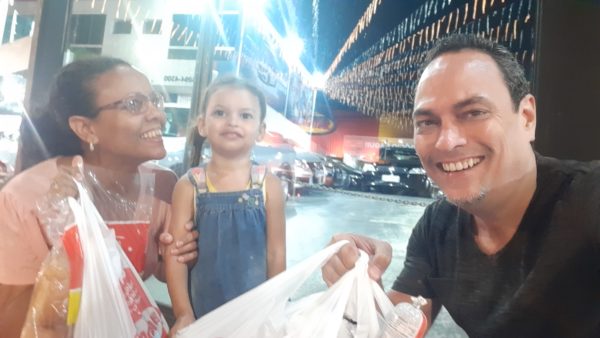Running Errands in Brazil

HAVANA TIMES – Ensuring survival in Cuba, when we lived there, was an odyssey. And now that we’re no longer there, they say it’s much worse. Supplementing the meager basic food basket sold by the government meant buying stolen goods, traveling long distances, and paying exorbitant prices for food.
Here in Brazil, we don’t have that problem. This is still a third-world country, but buying food for the month, at least for us —an immigrant family where both mom and dad work— is easy and affordable.
Our combined monthly household income of five thousand reais (almost a thousand dollars) is decent, though not high. Of that, we spend approximately one-fifth to buy food, cleaning products, and any supplies we need for the month.
As a vast country focused inward, the vast majority of the products consumed in Brazil are locally made. Access to imported or high-end products is exclusive to families with high incomes or those willing to spend everything they earn on the month’s groceries.
We aim to grow economically. So, we don’t spend all we earn on food. And although it was difficult at first —because we had to furnish the apartment, buy certain furniture, appliances, clothing, etc.— we’ve already started freeing ourselves from the burden of credit.
That means when you get paid and cover internet, phone, water, electricity, and rent, you’re left with a surplus that you can save for, in the future, starting a small business.
Salaries in this country are low, but the system leans somewhat to the left, and there are many things you can acquire cheaply or for free, such as medical care, certain medications, government aid, and food. This compensates for it.
So, for us, who were used to paying a fortune for that ground mincemeat of unknown origin in Cuba, we don’t spend money on the most expensive products, and yet we still eat well.
While the average Brazilian loves churrasco and is willing to pay forty, fifty, and even seventy reals for a kilogram of beef (one dollar is roughly 5.5 reals), we eat chicken and pork, which range between five and twenty reals per kilogram.
Every now and then, we treat ourselves to beef and even fish. For example, a kilogram of salmon costs one hundred and twenty-nine reals (around twenty-three dollars, about a tenth of a minimum wage).
Additionally, we spend as little as possible on fizzy drinks, snacks, and junk food, partly to take care of our health. Because the truth is, when a Cuban arrives in a capitalist country, they tend to go wild for those products they couldn’t have in Cuba.





